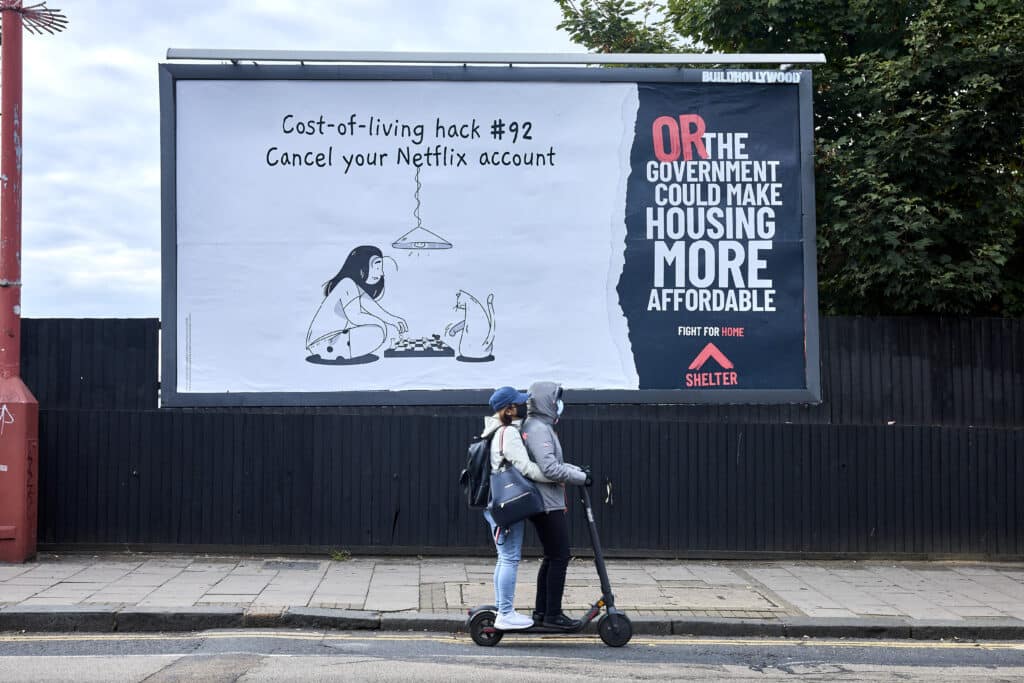One brand’s journey to being named ‘best in-house team’

How do you turn a struggling in-house studio into an award-winning creative team? Shelter creative director Helen Jones has some advice
Last month, as I held aloft a surprisingly heavy, small, metal trophy, I had a flashback to where my in-house journey started and how far I’d come. My team at Shelter had just won In-house Agency of the Year at a major creative awards ceremony. It’s a global award, so I’d like to say that makes us the best team in the world – which is a very long way from where I was when I joined Shelter.
Let’s rewind back a few years to where it all started. I’d spent almost 20 years working in London’s top ad agencies, I’d always done charity projects for free in my spare time and decided it was time to bite the bullet, take the pay cut and work full-time at a charity.
The Shelter creative team was at an all-time low. They were a small team of four and Shelter had done an internal satisfaction survey of the work they produced. It was rated at just 42%. They hired me to turn things around and I naively thought I could swan in with my years of ad agency experience and show them all how it’s done in the ‘real’ advertising world.
I couldn’t have been more wrong. I had totally underestimated how different running an in-house team would be and just how much I could learn from those who were already in-house.
Over the last few years we’ve had our ups and downs, but together we’ve evolved the way we work and educated those we work with. And here we are now, a successful team of 14 people, winning awards and delivering some outstanding and, most importantly, highly effective work.

Don’t get me wrong, this hasn’t happened overnight and there are still many ways we could improve. But here are some of the things I learned along the way.
You get out what you put in
The reason the team weren’t producing good work wasn’t because they weren’t any good – but because they were being treated like Mac monkeys, with prescriptive briefs, leaving no room for creativity and innovation. Changing the briefs to be goal-based, and educating stakeholders on why they should be briefing in what they wanted to achieve – not what they thought the output should be – made a huge difference.
Believe in yourselves
The team were called The Studio, so the first thing I did was relaunch the team with a new name that better reflected who they were and what they could do. I simply named them The Creative Team. Even that one small thing helped them start afresh and understand their own potential. Getting the team to understand how good they could be, was the first step towards making them the great team they are today.
Good processes, good work
We’ve spent a long time improving our processes, from getting the organisation to prioritise work, to daily stand ups. Every improvement in process leaves us more time to focus on being creative
In-house is not the same as agency
Don’t try and run your in-house team exactly the same way as an agency team. You need to acknowledge they’re different. There are great advantages like working side-by-side with your stakeholders, but also some constraints like not always being able to flex in size with freelancers when you get busy.
Fight for your place at the table
A common complaint of in-house teams is that all the best briefs go out to agencies. So my advice is get hold of some of the best briefs and ask to pitch against the agencies. It’s a no-risk strategy for the stakeholders and gives you a chance to really prove how good your team is.
It takes time
Big organisations can take a long time to adapt and change. Play the long game. Have a vision for where you want your team to be in three to five years and what needs to change to get there.
My journey from agency creative director to in-house creative director hasn’t always been easy. It’s been frustrating and exhausting at times, but seeing the great work my team produces and the real difference that work makes is ultimately incredibly rewarding. And to see the team win some awards along the way is just the cherry on the top.
Helen Jones is Creative Director for Shelter.
